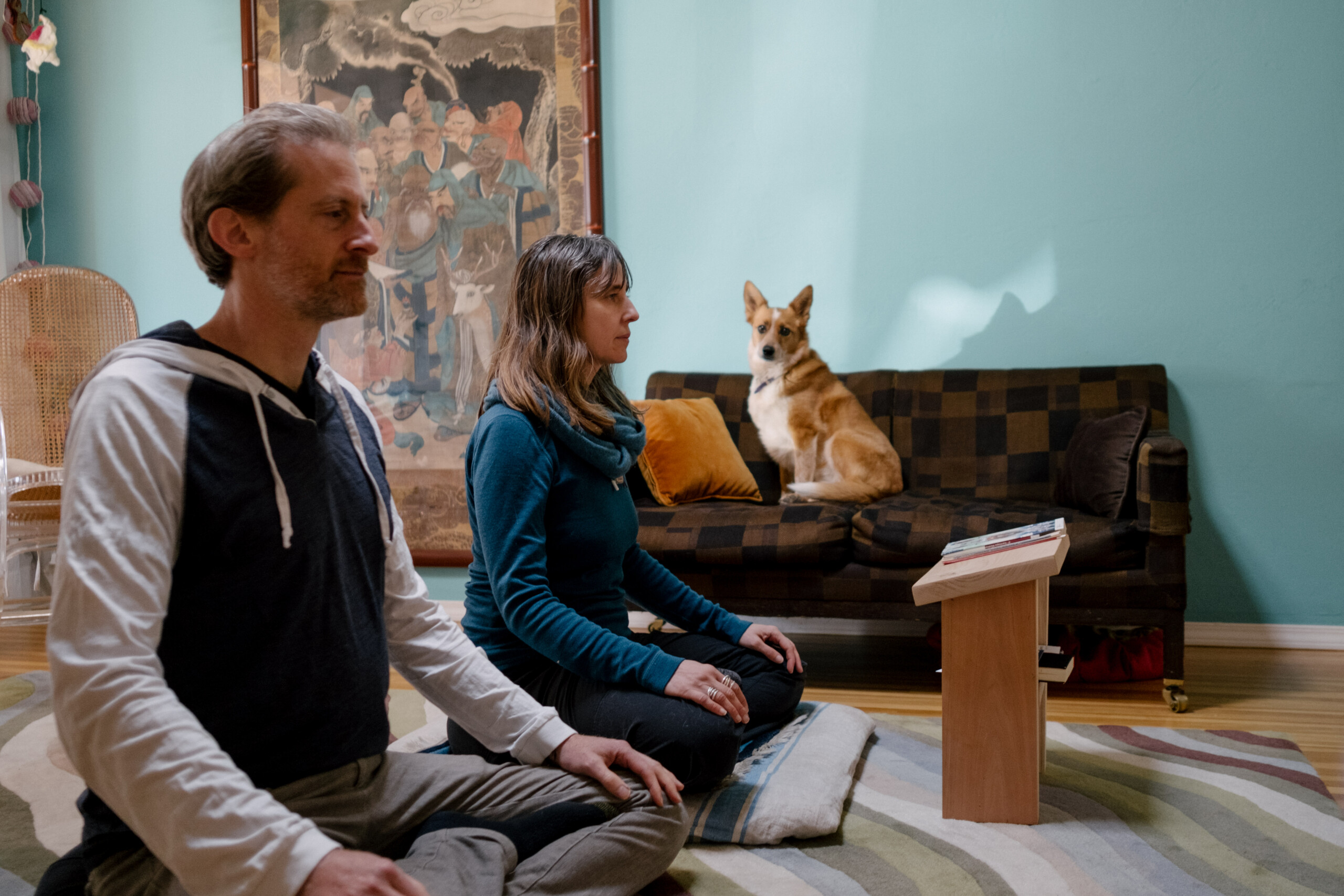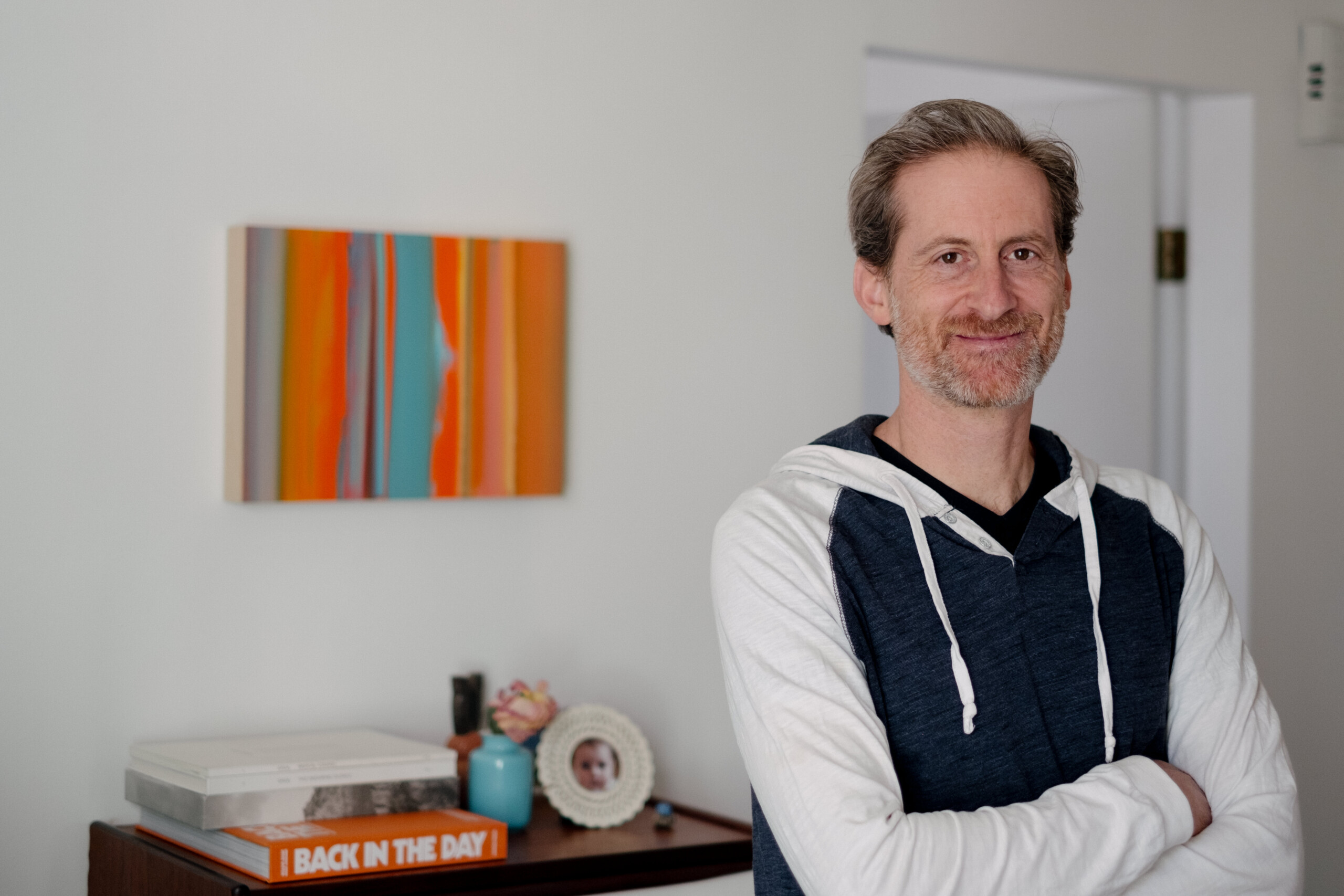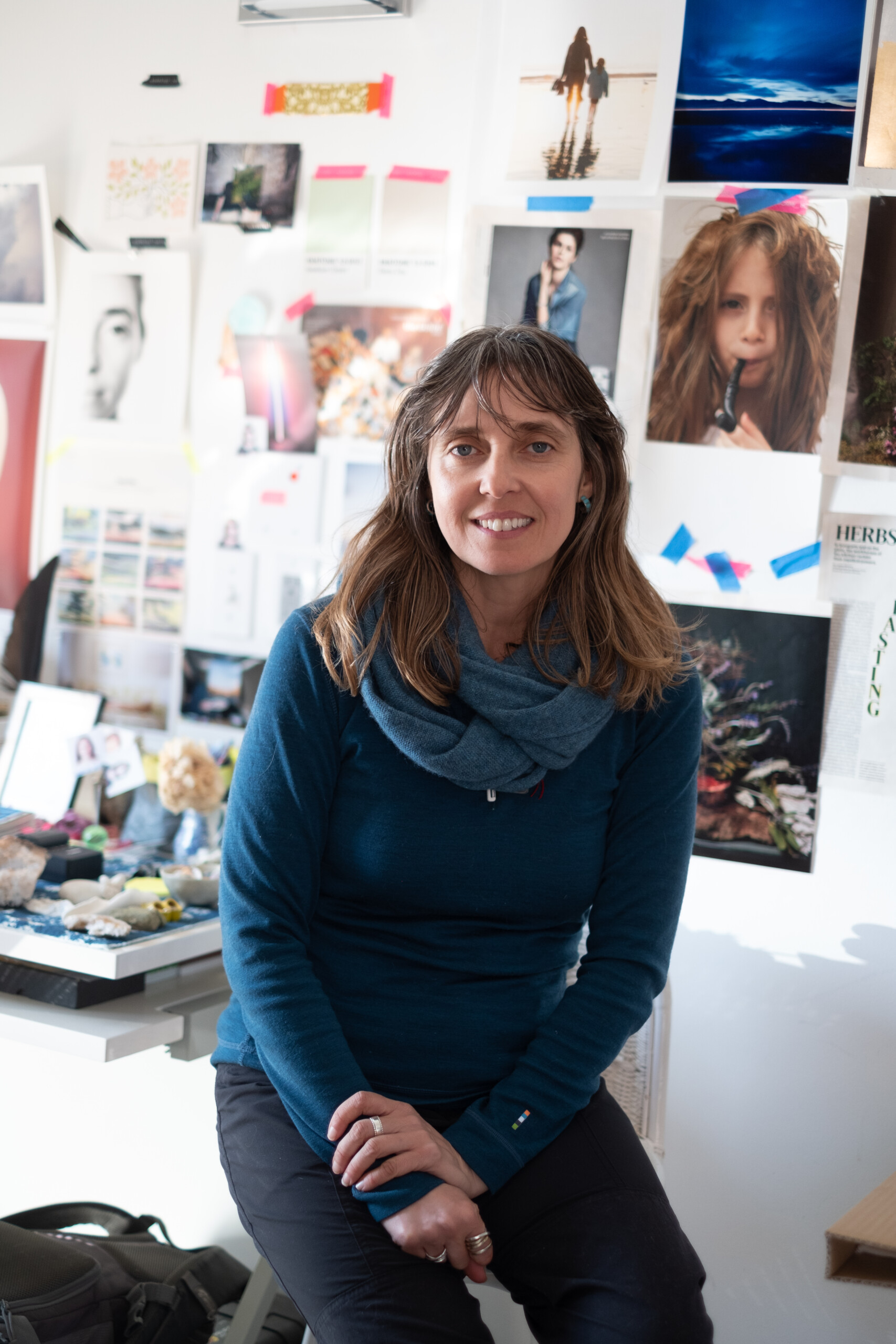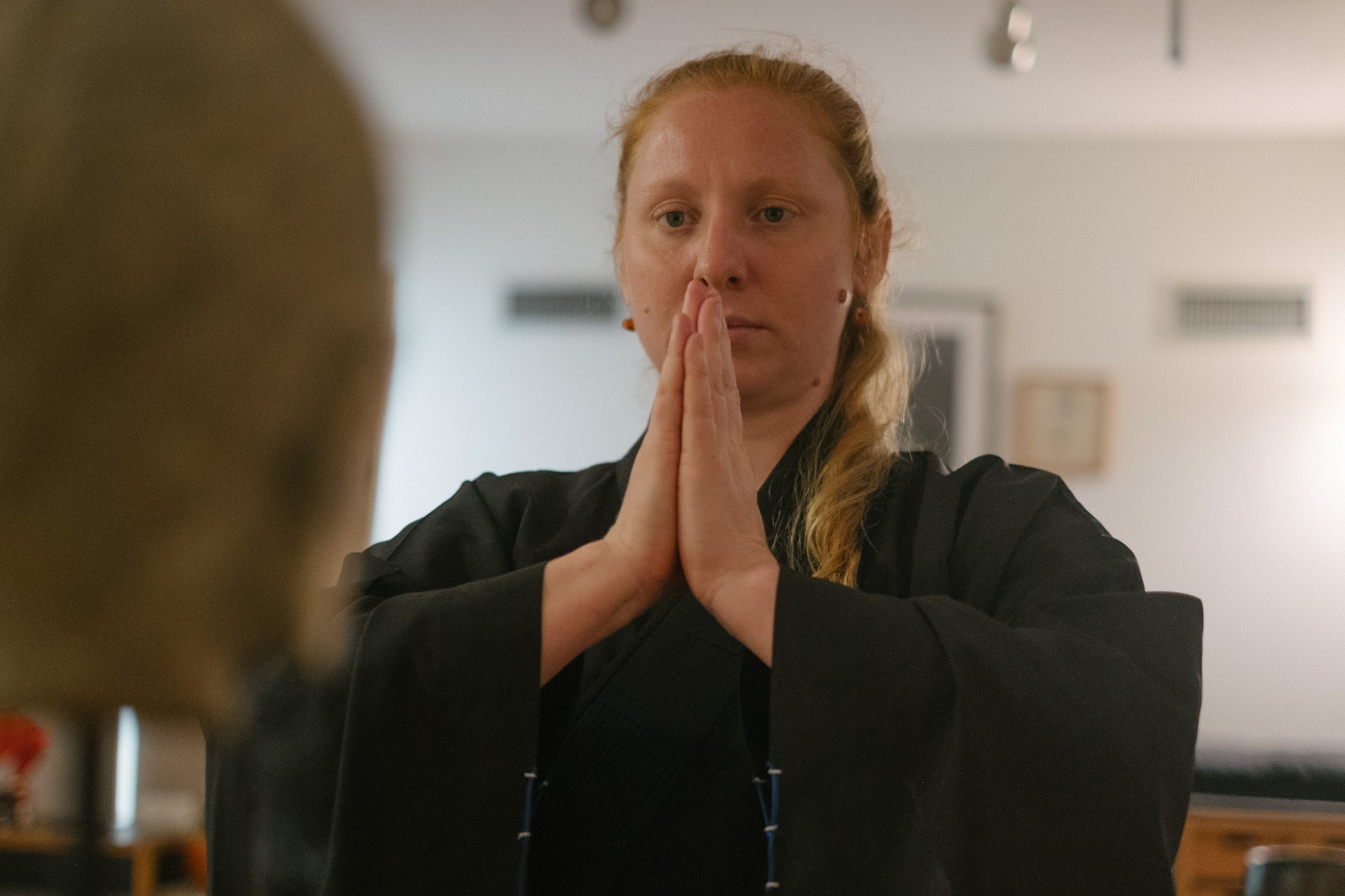When were you first exposed to dharma?
My first exposure to Buddhism wasn’t significant. Infact, it was a turn off. A man who claimed to be Buddhist visited our high school and basically told our class his goal was to become a heartless robot. Well, not entirely, but pretty much… There wasn’t any joy.
A mushroom trip, where I experienced the bardos and death shook me to the core a few years later, and I turned my focus away from worldly accomplishments, and towards dharma. I spent 6 months in India and came into contact with an Advaita Vedanta teacher. Later I was “adopted” by a Cherookee grandmother medicine woman, and finally settled into Buddhism, when I took refuge with my current teacher Lama Ole Nydhal in 1996.
The reason I stuck with Buddhism is it gives me tools I can work in everyday life, as well as prepare me for the most profound experiences. The results of practice are attainable and methods are useful across the three vehicles. I also am at home with my sangha.
Kim writes:
My first exposure to Buddhism was my Korean neighbor, who made offering and lite incense and sat quietly. It was a cultural experience- no buddhist teachings, but I liked the beauty of offerings and sitting quietly.
Later when I was in college and met my, now husband, Willy, he introduced me to lay Buddhism, getting the teachings and practicing through Lama Ole Nydahl, via the 16th Karmapa Rangjung Dorje of the Karma Kagyu Tibetan Lineage.
How has the path manifest in your daily experience?
I associate Buddhism with growing up. As I become an adult, I integrate the methods and teachings into my daily life.
If you explore other lineages within buddhism, how did you come to decide on which lineage was right for you?
My buddshist Lama first came to me in a dream. It was one of the most profound experiences of my life. There was no time or space, only incredible bliss and I was travelling at the speed of light. Two weeks later a friend invited me to Buddhist lecture, and the following weekend I found myself doing a phowa practice (course on conscious dying) with Lama Ole Nydhal. When I met him, he said “I saw you flying”. I took refuge at that course.
It’s not like trying out different meals off a menu at different restaurants. When you find your teacher it’s more like being born into a certain family with certain parents. One does not exchange root lamas on the vajrayana path.
My root lama is Lama Ole Nydhal, and my lineage lamas are the 17th Karmapa Trinley Thaye Dorje,Shamar Rinpoche and other karma kagyu lineage lamas.
What are some of your practices/rituals that you do to support your spiritual development (meditation/prayers and etc)
Lately, I often start the day with 54 or 108 prostrations, which is a wonderful way to take refuge, and on a practical level gets the blood moving and keeps the body looking and feeling great. In the evening I’ll sit down to some form of guru yoga… either 16th Karmapa, 8th Karmapa or guru yoga from the ngondro. These are familiar, comfortable practices, nothing special, yet always bring me back into the blessing and powerfield of my lineage, teachers and sangha.
Which sangha do you normally attend. Please describe how the role of the sangha has supported/inspired your practice.
If I didn’t have a sangha I’d be an egotistical jerk. These are my true friends that I butt heads with, share meals with, break bread with, so to speak. I belong to the Diamond Way Karma Kagyu sangha.
What is your primarily profession?
I am an artist/painter. My painting practice does not mix with buddhism on an outer level. I keep the two distinct and separate.
Kim states: I am a photographer- studio and fine art
Do you think your personality or background influence the lineage/practices that resonate with you?
I don’t. The reason I say this is there are people from every country in the world (outside of the Middle East and Africa) that take part in Diamond Way Buddhism. The practitioners belong to every political party, socio-economic spectrum you can imagine. It seems there is a place for everyone in the Dharma, no matter what their background is or wherever they happen to be in life. I’ve met ex Russian Mafia members, as well as social service workers in Diamond Way. I’ve met janitors and CEO’s. Personality and background appear to not be a factor. Diamond Way attracts people who have a connection to Kagyu and Nyingma transmissions- nothing more, nothing less.
Willy Background
Willy went through a disillusionment phase in his pursuit of knowledge, initially believing that studying and learning could unlock the secrets of the universe. This perspective changed after a transformative experience with mushrooms, where he went through a death process and realized the limitations of his scholarly approach.
Driven by a desire for deeper understanding, Willy took a year off and traveled to India, immersing himself in its rich and diverse culture. There, he encountered various intense and archetypal experiences, ranging from poverty to spiritual practices.
Willy’s spiritual journey continued when he met an Advaita Vedanta teacher named Papaji, who emphasized self-inquiry. Despite the initial confusion, this experience laid the groundwork for a more profound transmission.
The turning point occurred in a once-in-a-lifetime dream where Willy experienced bliss and a sense of interconnectedness. The dream led him to a Buddhist lecture by a Danish teacher, introducing him to the practice of Phowa, a conscious dying technique.
Initially skeptical, Willy’s interest was piqued when he learned about the outer sign of Phowa—a hole in the top of the head. This curiosity led him to participate in the practice, resulting in a profound and undeniable experience that convinced him to explore further.
Willy sought guidance from Lama Ole and expressed a desire to follow a similar path. Lama Ole recommended the Ngondro practice, sparking Willy’s curiosity and commitment to learning. Despite challenges and the departure of others, Willy continued his journey in search of deeper understanding and connection on the Diamond Way.
Kim’s Background
Kim’s spiritual journey began with her upbringing around her Korean grandmother, who followed Buddhism more as a cultural tradition. Despite growing up in a predominantly Christian environment in a small Pennsylvania town, Kim found the Buddha’s image appealing and associated it with peace and wisdom.
In college, Kim’s interest in Eastern philosophy and yoga grew, but she didn’t actively seek a practice. Art became her path, offering a unique sensibility and truth. Through art, Kim discovered a connection to Willy and, subsequently, to the Buddhist lineage.
Willy credits Kim with revealing the spiritual tradition within Western art, challenging the perception that such wisdom was only found in Asian culture. Kim’s appreciation for art as a means of opening up to a greater space and interconnectedness influenced Willy’s perspective.
Art, for Kim, is a way to transcend the limited bandwidth of everyday life and explore broader possibilities. Buddhism, introduced by Willy, provided keys to understanding the universe, emphasizing the impermanence and emptiness that, paradoxically, contain vast potential. Kim’s insights and the Buddhist teachings contributed to a realization that the awakened state is accessible to everyone through awareness, dispelling the notion that it exists externally.
Relationships
In the midst of arguments, Willy and Kim found a unique approach to conflict resolution – a pause for meditation. They would agree to meditate, and after the practice, the intensity of their disagreement would fade, demonstrating the effectiveness of gaining distance through meditation.
Buddhism, for them, is about self-responsibility and maturely addressing their emotional baggage. Engaging in practices like nundro involves daily ego scrutiny and dismantling identification with disturbing emotions, leading to a realization that these emotions are not the true self.
Their practice extends beyond personal growth, emphasizing the importance of benefiting others. Willy and Kim stress the significance of applying these principles to their relationship, acknowledging moments of ego-driven actions and committing to personal growth.
Anger, considered the most damaging emotion in Buddhism, is highlighted as a potential threat to one’s accumulated merit. They share a Confucius story illustrating the destructive nature of anger and emphasize the challenge of transforming it, advocating for avoiding it when possible.
Willy acknowledges the difficulty of transforming anger and points out the wisdom in avoiding it altogether. Kim introduces the concept of creating boundaries, particularly in parenting, as a form of authoritative guidance, clarifying that this isn’t anger but a necessary aspect of parenting.
The conversation concludes with the acknowledgment that transforming anger is a high-level skill they may not be ready to attempt, emphasizing the importance of honest self-assessment and choosing the path that aligns with their current capacities.
Kim on Art
In her photography, Kim explores the Dharma through the illusionary nature of the medium. She sees photography as a perfect way to depict the Dharma, emphasizing the transient and dreamlike qualities of life. Kim’s series focuses on the passage of time, drawing inspiration from Tibetan concepts of day as the long dream and night as the short dream. The series captures moments at the ocean and in the mountains, serving as a reflection of memories from the long dream.
For Kim, this work is a reminder to be present and take note of the miracles and happenings in life, often overlooked due to the busyness of daily routines. Through meditation, she believes people can slow down, allowing the metaphorical mud to settle in the mind. This enables individuals to become listeners, receiving insights directly from the external world rather than projecting constantly. Kim sees her photography as an offering, a reboot that encourages viewers to pause, observe, and decide whether to accept or leave the insights presented.
Parenting
Willy and Kim navigate the complexities of parenting with a mindful and Buddhist approach. While raising their daughter Audrey, they emphasize the importance of not imposing Buddhism on her but rather allowing her to choose her own path. They create an environment where Audrey can observe their different way of handling situations, cultivating qualities like non-reactivity and not taking things too seriously.
The couple acknowledges that Audrey notices their distinctive approach to life, emphasizing that their Buddhist values contribute to their identity as good people. They prioritize Audrey’s happiness over conventional societal expectations, providing her the freedom to explore interests like gymnastics and horseback riding.
Willy and Kim instill the value of happiness in Audrey, focusing on genuine contentment rather than conventional success. They guide Audrey through challenges, teaching her to navigate emotions and gain distance from situations. The couple doesn’t push meditation practices on Audrey but integrates mindfulness into everyday life, encouraging her to manage time, emotions, and decision-making.
In handling conflicts, they implement consequences that aim to teach rather than punish, emphasizing thoughtful reflection on actions. They share Buddhist principles such as empathy, putting oneself in others’ shoes, and understanding the impermanence of emotions. The couple’s approach is holistic, recognizing that a good education forms the foundation for concentration skills, an essential aspect of mindfulness.
Ultimately, Willy and Kim aspire to lead by example, hoping that Audrey will be inspired to embrace Buddhist practices if she finds them beneficial. Their approach centers on fostering a happy, balanced, and mindful life for their daughter, allowing her to choose her path while providing the necessary tools for navigating the challenges of existence.
Perception
Willy and Kim share their experiences of introducing Buddhism to their families and friends. Initially, parents express skepticism about Buddhist practices, questioning the significance of altars and gurus. However, they gradually notice positive changes in their children’s demeanor and life success, making them happy for their well-being.
While Kim’s stepdad actively engages in meditation, her late mother and stepdad also participated in courses and retreats, showcasing a pre-existing interest in Zen practices and Tai Chi. Willy’s relationship with his father revolves around shared activities like skiing, where profound conversations touch on topics such as the unity of subject, object, and reaction, as well as the impermanence of life and death.
Willy’s father, at 73, exemplifies an acute awareness of impermanence, acknowledging each skiing day as a potential last. Conversations with his father naturally delve into the teachings of impermanence, fearlessness in the face of death, and the profound moment of entering into free fall.
In the realm of friendships, Willy observes a recent shift among his peers, especially those in their 40s and 50s. As people around them experience aging, sickness, death, and loss, friends begin to express interest in Buddhism, seeking advice and guidance. Willy anticipates that this trend will continue, providing opportunities to share practical advice and insights derived from their years of practice.
Willy and Kim aim not to convert others to their specific school of thought but to offer timely guidance and nuggets of wisdom as needed. They envision their continued practice contributing to a sense of stability, embodiment, and the ability to share valuable insights with others who may be seeking solace or understanding in the face of life’s challenges.
Sangha
Willy and Kim emphasize the importance of Sangha, describing its significance in their spiritual journey. They highlight how Sangha, a community of individuals practicing together, provides support, mirrors experiences, and aids in personal development. The Sangha becomes like a family, helping individuals refine their rough edges through shared practice and honest feedback.
Willy reflects on the loneliness experienced without group support, emphasizing that Sangha offers opportunities for growth and feedback that are essential for one’s spiritual development. The community, both locally and internationally, becomes a source of inspiration and connection.
They share their experiences in New York, where the Sangha was vibrant, diverse, and supportive. Despite occasional challenges resembling family dynamics, Sangha plays a pivotal role in polishing and refining individuals on their spiritual path.
The discussion extends to the role of travel teachers in Diamond Way Buddhism, emphasizing that it’s more about Sangha activity than traditional teaching. Willy shares insights gained from his own experience as a travel teacher, highlighting the challenges and transformative aspects of representing the Dharma in this role. He expresses that true happiness and confidence are fundamental prerequisites for engaging with the Sangha in this way.
Furthermore, the couple discusses the significance of Sangha on an administrative level, describing how responsibilities within the community provided them with valuable skills. They draw parallels between managing Sangha activities and navigating the challenges of promoting oneself as an artist. The emphasis is on communication, balance, and projection of one’s path.
Willy and Kim view Sangha not only as a spiritual community but also as a practical training ground for personal and professional development. They recognize the essential role Sangha plays in providing support, feedback, and a sense of community on the path of spiritual growth.
















































































